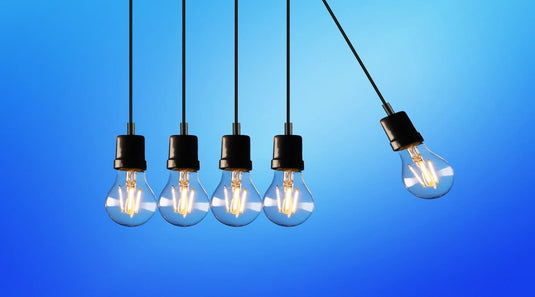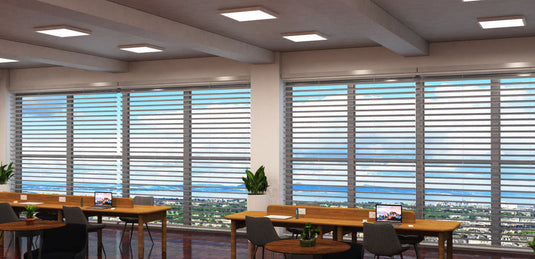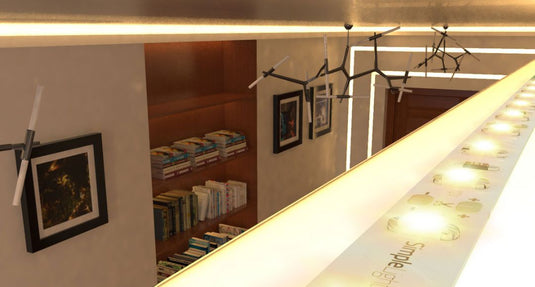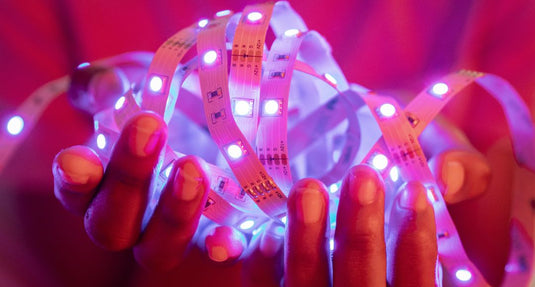LEDs are by far the most popular type of bulb around today and are used for all different types of lighting, whether it's within a home or for commercial purposes.
Not only are they the most efficient type of lighting as they emit more light per watt, but they also last longer which makes them perfect for your home and makes them cost-effective too.
You will not have to replace the bulbs very often at all, with an LED bulb having a lifespan of an incredible 50,000 hours. Keep reading to find out more about the longevity of LED lightbulbs and what affects their lifespan.
What is an LED Lightbulb?
LED stands for light-emitting diode and refers to a type of lightbulb that is found in electric lights. LED light bulbs and/or lamps are by far nowadays the much-preferred lighting choice as they are more efficient than traditional incandescent light bulbs.
LED’s have 80%-90% more energy output efficiency and not only will they need less energy to emit light, but they will also last a lot longer than traditional lightbulbs too. The many benefits of using LEDs mean that they are used in a variety of ways, not just in the home but in electrical devices, motor vehicles and even in traffic signs - the list goes on.
LED For Your Home
The use of LEDs are popular throughout your home due to the longevity of them means that you will not have to keep on top of the maintenance of changing them as often as conventional bulbs.
They can be used for different lighting purposes including decorative wall art and LED spots in the ceiling, which is especially favourable in rooms such as the kitchen for task lighting purposes. Not to mention they are also a stylish, modern alternative to other bulbs.
LED tubes or strips are also an affordable way to highlight certain features in your home such as underneath cupboards, furniture or other fixtures. They can be cut to the right size to give them that custom made and expensive feel. Lots of LED lights for the home come complete with remote control for ease of use. Whilst more modern LEDs use Wi-Fi or Bluetooth to control, with the aid of a smart device. These methods often control the colour of the lights as well as the brightness too.
How Long Can You Expect a LED Lightbulb to Last?
The amazingly long lifespan of LEDs are a big advantage and is why they are considered the best lighting option. Their popularity means the uses of them are endless and spans across a range of products such as; throughout the home, in electrical screens such as phones, laptops and televisions, in motor vehicles and traffic signs to name a few.
The average rated life of an LED lightbulb as mentioned is around 50,000 hours of light output - with some branded LED companies claiming their lightbulbs can last as many as 100,000 hours.
A person’s normal usage of LED lightbulbs in the home should stretch to around 10-14 years. Compared to traditional incandescent bulbs which have the standard usage time of only around 750-2000 hours, meaning there really is no comparison compared to the LED competitors.
Other Factors That Might Affect the Lifespan of LED Lightbulbs
Of course, the lifespan of your LEDs will depend on how heavily you use them each day, whilst some other factors might affect the longevity of LEDs in your home. Meaning you might not get as many hours out of your bulbs as originally assured. So consider this if your LEDs do not last as long as the possible 50,000 hours.
A dimmer feature can prolong the life of your LEDs, as dimming reduces the current which results in the reduction of temperature within the bulb, which may help to extend the lifespan of your bulbs.
Some other factors can negatively affect the lifespan such as the overall quality of the bulbs. This varies from brand to brand and depending on the manufacturer.
Poor quality component fittings or poor design can drastically shorten the lifespan, although technologies always continue to drastically improve as time goes on. Surrounding temperature is another factor, as LEDs should not become too hot - bulbs that become too hot may overheat and shorten the overall usage time.
To prevent this from happening some are fitted with metal heatsinks to draw the heat away. Electrical currents are something else that can affect lifespan if the current is higher than it needs to be.
As higher voltages cause higher heat risks, which damages bulbs over time and potentially the soldering around them too. This can cause them to flicker, dim or die prematurely.
LED lightbulbs on average last half of their expected lifespan due to some of the factors mentioned above. Most manufacturers however do offer a guarantee if LEDs don’t reach their life expectancy and if they fail particularly early.
Why Not Make the Switch to LEDs Today?
The longevity of LED lights is by far one of the biggest benefits of using them throughout your home. As you will not have to think about the maintenance of them or the tedious task of changing the bulbs for many years to come.
This is especially good compared to a standard traditional lightbulb lasting as little as 750 hours. There is also a reason why they are the bulb of choice and used throughout many areas commercially, in electricals, for street lighting and across motor vehicles. All the many purposes for LEDs is proof that they are simply the best bulb option.
They can be used in any room throughout your home with the possibilities of their usage being endless. You can choose to get creative with them too, whether that be for creating a soft ambience or if you choose to make a big statement, whatever the vibe of the room, there will be an LED solution to add something a bit extra to your home.




